


1963
Science Fiction
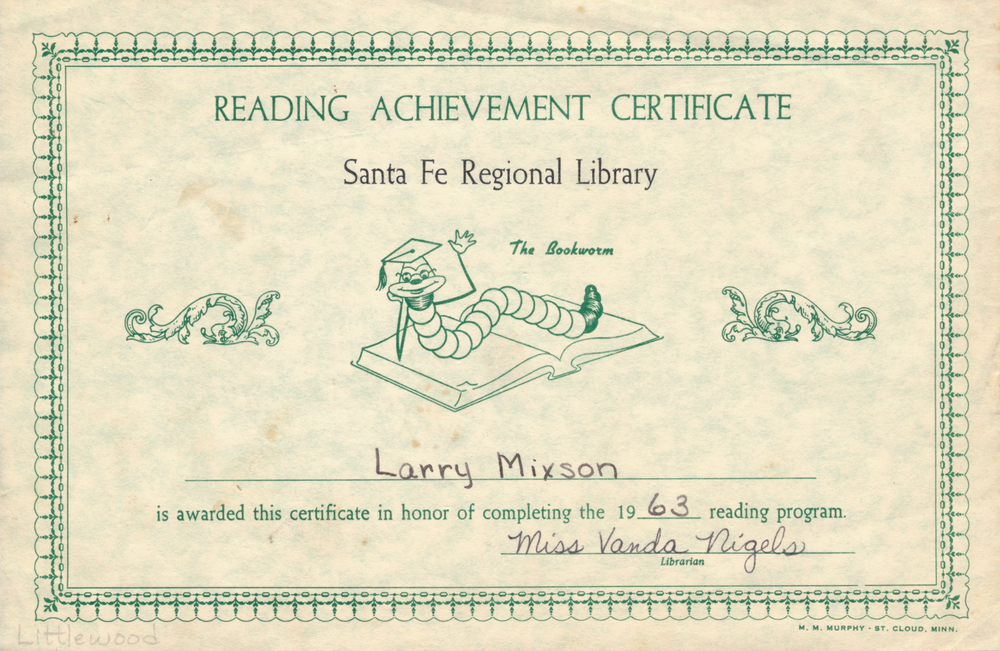 Click
on certificate to see reading list
Click
on certificate to see reading list
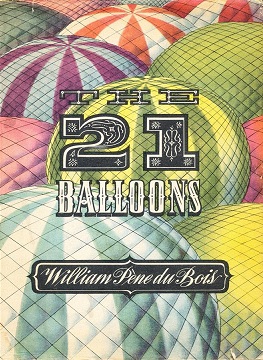


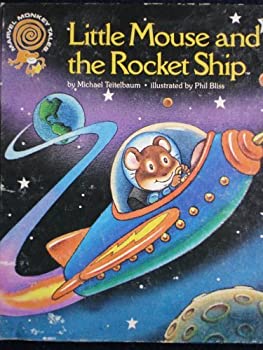
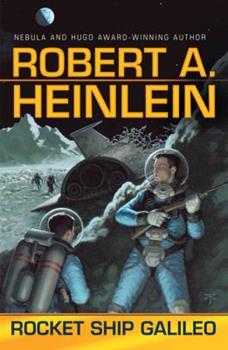
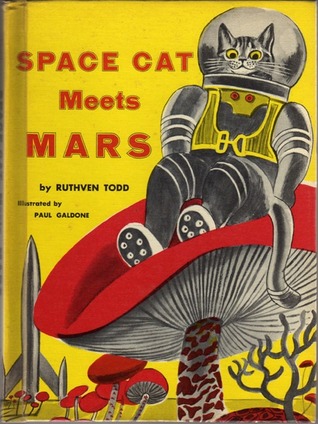
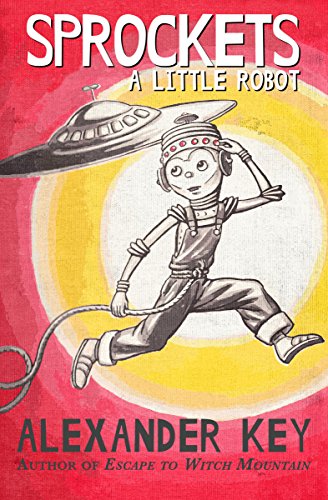
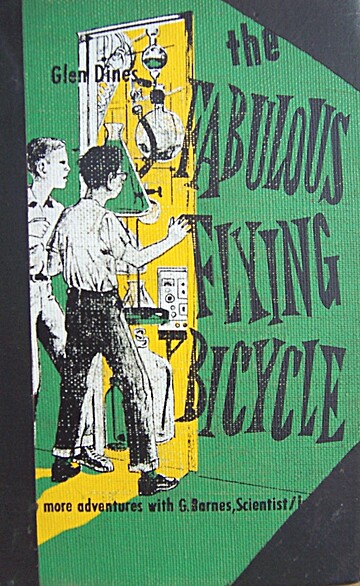

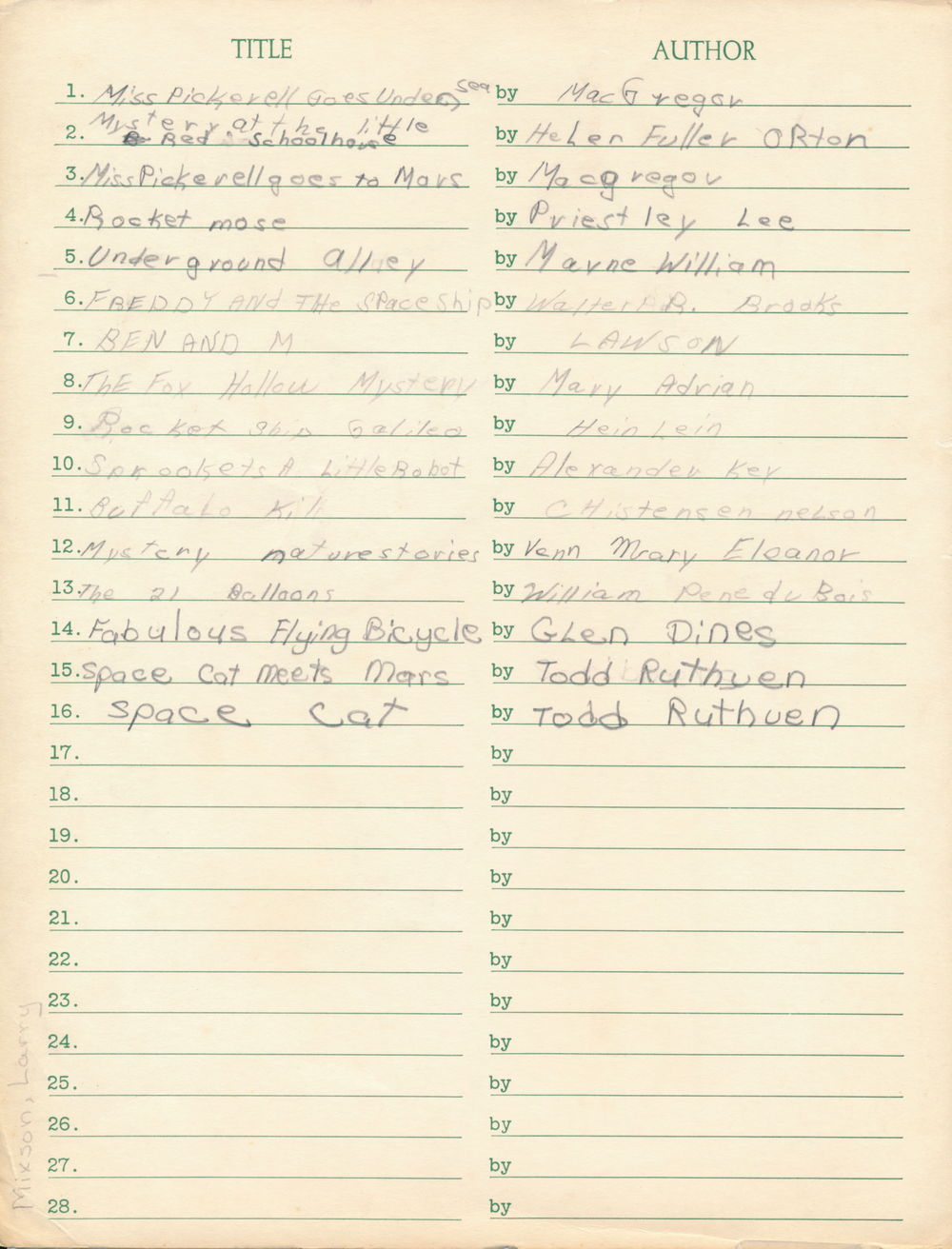
Books read that summer. Note that I started printing instead of using cursive writing.
When summer of ’63 came around Mom again started taking us to the public library where I discovered science fiction. After reading about so many interesting things in Popular Science, I found books in the children’s section that had space and science in them.
 I started with the Miss
Pickerell books, Miss Lavinia Pickerell an unlikely young lady
wearing old‑fashioned clothes and an outlandish hat, who manages to
inadvertently stowaway on a rocket to Mars in her first adventure.
In book two, Miss Pickerell's hears that her collection of rocks
from Mars has gone down with the shipwreck of Liberty Bell and then
finally must put on a diving outfit and search for the wreckage
herself! Miss Pickerell was wonderful, she used scientific
principles and addressed topics like weightlessness in space travel,
atomic energy and carbon-14 dating, nuclear-powered submarines and
the continental shelf, the "bends" affecting divers who surface too
rapidly, just like I had read in Popular Science. My first woman
hero.
I started with the Miss
Pickerell books, Miss Lavinia Pickerell an unlikely young lady
wearing old‑fashioned clothes and an outlandish hat, who manages to
inadvertently stowaway on a rocket to Mars in her first adventure.
In book two, Miss Pickerell's hears that her collection of rocks
from Mars has gone down with the shipwreck of Liberty Bell and then
finally must put on a diving outfit and search for the wreckage
herself! Miss Pickerell was wonderful, she used scientific
principles and addressed topics like weightlessness in space travel,
atomic energy and carbon-14 dating, nuclear-powered submarines and
the continental shelf, the "bends" affecting divers who surface too
rapidly, just like I had read in Popular Science. My first woman
hero.
 Then
there was Rocket Mouse, like a scientific version of the Saturday
morning cartoon Mighty Mouse, who, equipped with home-made goggles,
sand pail helmet, parasol parachute and the fiery spirit of a
pioneer, undergoes a series of tests, some designed by himself,
others inside the pockets of missile men, all climaxing in his
hazardous journey into space and back. Ok, it was in the children’s
section.
Then
there was Rocket Mouse, like a scientific version of the Saturday
morning cartoon Mighty Mouse, who, equipped with home-made goggles,
sand pail helmet, parasol parachute and the fiery spirit of a
pioneer, undergoes a series of tests, some designed by himself,
others inside the pockets of missile men, all climaxing in his
hazardous journey into space and back. Ok, it was in the children’s
section.
 Freddy
and the Spaceship wasn’t much better, after all Freddy was a
Pig. Freddy and his friends decide to take a trip to Mars in
Benjamin Bean's spaceship, but they are knocked off course and find
themselves on a strangely familiar planet, where danger (and
Martians) lurk. There were other Freddy books, all simple and quick
reads and I soon bored with them.
Freddy
and the Spaceship wasn’t much better, after all Freddy was a
Pig. Freddy and his friends decide to take a trip to Mars in
Benjamin Bean's spaceship, but they are knocked off course and find
themselves on a strangely familiar planet, where danger (and
Martians) lurk. There were other Freddy books, all simple and quick
reads and I soon bored with them.
 Sprockets
a Little Robot I found amusing, a robot, no bigger than a boy, named
Sprockets, and though small, has the most powerful electronic brain
on Earth. The modern “computer” didn’t exist but there were
electronic brains as I had read in the Tom Swift books. Sprockets,
pursued by the foreman, escapes, runs through the moonlit city,
pushing his little body as hard as he can until rain starts to fall
and he begins to rust. At the last minute, Sprockets is rescued the
kind Dr. Bailey who adopts the little robot and sets off to save the
universe and learning what it is to be alive.
Sprockets
a Little Robot I found amusing, a robot, no bigger than a boy, named
Sprockets, and though small, has the most powerful electronic brain
on Earth. The modern “computer” didn’t exist but there were
electronic brains as I had read in the Tom Swift books. Sprockets,
pursued by the foreman, escapes, runs through the moonlit city,
pushing his little body as hard as he can until rain starts to fall
and he begins to rust. At the last minute, Sprockets is rescued the
kind Dr. Bailey who adopts the little robot and sets off to save the
universe and learning what it is to be alive.
 The
21 Balloons I found fascinating, a story not set off in space,
but using technology here on earth. Professor William Waterman
Sherman, a recently retired schoolteacher, sets off leaving San
Francisco on a giant balloon to fly across the Pacific Ocean
determined to spend a year drifting alone, relaxing on the balloon
basket house but then he and his balloon disappear. Three weeks
later his is found, in the middle of the Atlantic ocean floating
among a strange wreck of twenty deflated gas balloons. Sherman then
describes how he landed on the island of Krakatoa, and discovered a
world of unimaginable wealth, eccentric inhabitants, and incredible
balloon inventions. When he tries to leave the island in a balloon.
I had long forgotten this book and throughout my life I had
daydreams of inventing and building a giant balloon with a house
underneath and floating around the world. As I got older the
balloon house got more sophisticated with solar power, ability to
pick up water from the ocean to make hydrogen to keep the balloon in
flight and so on. It wasn’t until I was seventy that I read the
list of books I read that summer in 1963 and realized that this was
the book that started those dreams.
The
21 Balloons I found fascinating, a story not set off in space,
but using technology here on earth. Professor William Waterman
Sherman, a recently retired schoolteacher, sets off leaving San
Francisco on a giant balloon to fly across the Pacific Ocean
determined to spend a year drifting alone, relaxing on the balloon
basket house but then he and his balloon disappear. Three weeks
later his is found, in the middle of the Atlantic ocean floating
among a strange wreck of twenty deflated gas balloons. Sherman then
describes how he landed on the island of Krakatoa, and discovered a
world of unimaginable wealth, eccentric inhabitants, and incredible
balloon inventions. When he tries to leave the island in a balloon.
I had long forgotten this book and throughout my life I had
daydreams of inventing and building a giant balloon with a house
underneath and floating around the world. As I got older the
balloon house got more sophisticated with solar power, ability to
pick up water from the ocean to make hydrogen to keep the balloon in
flight and so on. It wasn’t until I was seventy that I read the
list of books I read that summer in 1963 and realized that this was
the book that started those dreams.
 The
Fabulous Flying Bicycle was a simple story about a boy who invents a
flying bicycle and the adventures he goes on flying around on it.
It inspired me to make my own inventions.
The
Fabulous Flying Bicycle was a simple story about a boy who invents a
flying bicycle and the adventures he goes on flying around on it.
It inspired me to make my own inventions.
 Then
there were the
Space Cat books09op-
in which Space Cat, yes an actual cat named Flyball, and his pal,
Colonel Fred, travels in a spaceship. While they are on their way
home from Venus, the astronauts (astrocat) are forced to make and
emergency landing on Mars. Typical for a cat, Flyball’s a bit bored
by the Red Planet at first until his curiosity is roused by its sole
surviving fishing cat, a friendly, bright red, female named Moofa.
Will she turn out to be the cat’s meow? Very cute, and it had cats
in it.
Then
there were the
Space Cat books09op-
in which Space Cat, yes an actual cat named Flyball, and his pal,
Colonel Fred, travels in a spaceship. While they are on their way
home from Venus, the astronauts (astrocat) are forced to make and
emergency landing on Mars. Typical for a cat, Flyball’s a bit bored
by the Red Planet at first until his curiosity is roused by its sole
surviving fishing cat, a friendly, bright red, female named Moofa.
Will she turn out to be the cat’s meow? Very cute, and it had cats
in it.
 But
the book that captured me the most was Rocket Ship Galileo by
Heinlein. After World War II, three teenage rocket experimenters
are recruited by one of the boy's uncle, Dr. Cargraves, a renowned
physicist who had worked on the Manhattan Project (like in the
atomic bomb that ended the war), to refit a conventionally powered
surplus "mail rocket” to run on a thorium nuclear pile which boils
zinc as a propellant. Upon completion they stock the rocket, which
they name the Galileo, and take off for the Moon, which upon
arriving establish structure based on a Quonset hut and they claim
the Moon on behalf of the United Nations. Soon thereafter, the boys
find evidence of an ancient lunar civilization, and postulate that
the craters of the Moon were not formed by impacts from meteorites,
but by nuclear bombs that destroyed the alien race. It didn’t get
much better, the book was based on hard science I read about in
articles in Popular Science by Dr. Wernher von Braun. Kennedy had
announced the moon program, the Apollo rocket was being built,
although not nuclear power, was to take man to the moon. What was
science fiction was becoming a reality and I dreamed of my own
inventions and of going into space.
But
the book that captured me the most was Rocket Ship Galileo by
Heinlein. After World War II, three teenage rocket experimenters
are recruited by one of the boy's uncle, Dr. Cargraves, a renowned
physicist who had worked on the Manhattan Project (like in the
atomic bomb that ended the war), to refit a conventionally powered
surplus "mail rocket” to run on a thorium nuclear pile which boils
zinc as a propellant. Upon completion they stock the rocket, which
they name the Galileo, and take off for the Moon, which upon
arriving establish structure based on a Quonset hut and they claim
the Moon on behalf of the United Nations. Soon thereafter, the boys
find evidence of an ancient lunar civilization, and postulate that
the craters of the Moon were not formed by impacts from meteorites,
but by nuclear bombs that destroyed the alien race. It didn’t get
much better, the book was based on hard science I read about in
articles in Popular Science by Dr. Wernher von Braun. Kennedy had
announced the moon program, the Apollo rocket was being built,
although not nuclear power, was to take man to the moon. What was
science fiction was becoming a reality and I dreamed of my own
inventions and of going into space.
It was the trips to the library, the books I read, the articles in Popular science came together in my immigration that set me on a course of science and technology that carried though my life.
Updated: 08-06-2022